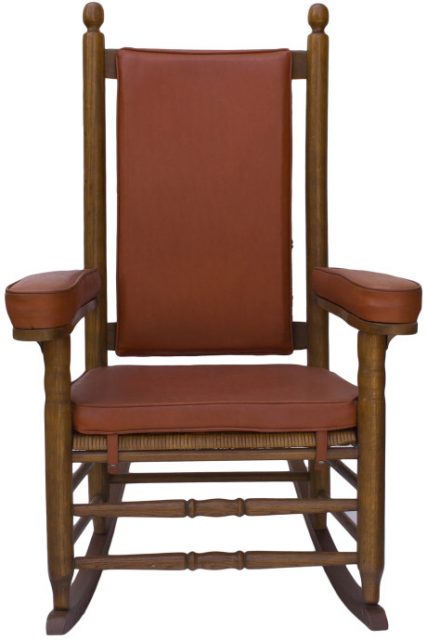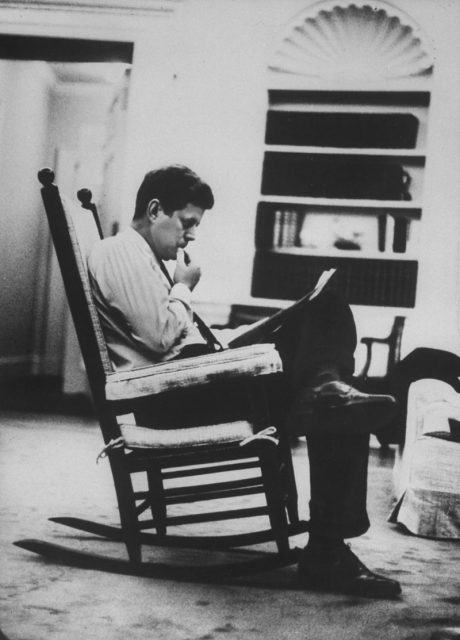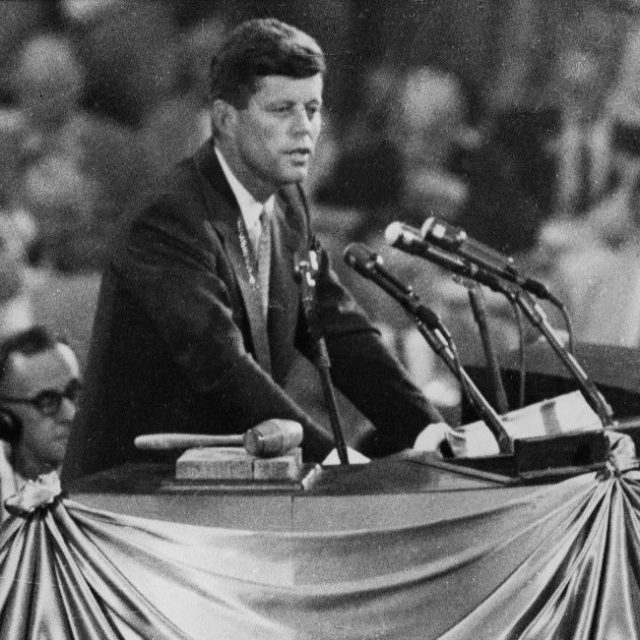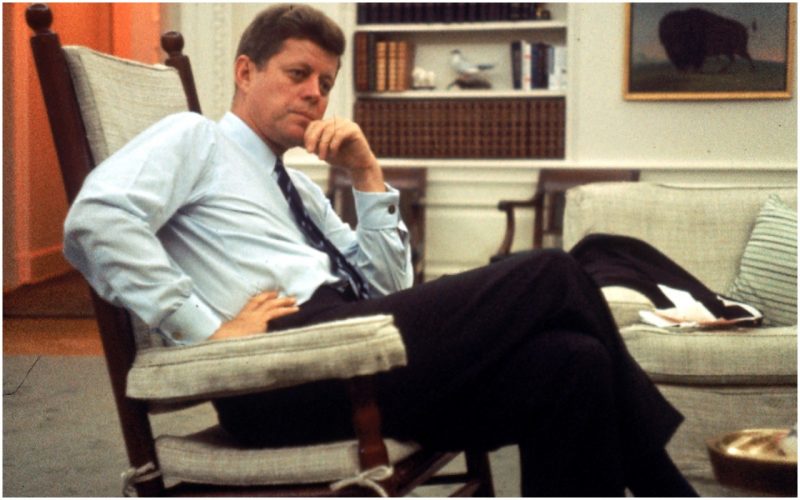On January 20, 1961, John F. Kennedy, at the age of 43, became the youngest elected president in U.S history. (Theodore Roosevelt was 42 when he was sworn in after the assassination of President William McKinley.) With his beautiful wife and two young cute-as-pie children, President Kennedy projected an image of health, youth, and vitality to the American people.
President Kennedy was known to have a “bad back,” popularly attributed to his heroic actions in World War II. But in truth, throughout his life he battled chronic disease and kept a tremendous amount of pain under wraps. To get through his days, he relied on a variety of therapies, including pain-relieving drugs, heat therapy, and the comfort of a good old-fashioned rocking chair.
Indeed, this most youthful-seeming president made the rocking chair cool again—then and now. One of the rockers tailored to his particular specifications just sold at auction for $90,000.
Kennedy’s health problems began at an early age. Young Jack had scarlet fever at age 3. Before high school, he began suffering from a gastrointestinal disease that would later be called Addison’s Disease. While at Harvard, he injured his back playing football. When World War II broke out, his back issue almost kept him out of serving his country, but his father’s political influence helped get him a commission in the US Naval Reserve in 1941.

In the Pacific Theater in July 1943, Kennedy was piloting a PT-109 that was rammed by a Japanese destroyer and cut in half. Several crew members were blown overboard. Despite re-injuring his back in the collision, Kennedy towed a badly burned crewman to an island three miles away with the strap of his life jacket clenched between his teeth, for which he later received medals for heroism and injury. He served a few more months before his doctors ordered him to be relieved of active duty and spent much of the 1944 undergoing and recovering from back surgery.
Indeed, Kennedy underwent four back surgeries between 1944 and 1957, none of which successfully relieved him of pain. By the time of his assassination, he was forced to wear a tightly bound lumbar back brace.
“[Kennedy] relied on a near-daily therapy regimen, at times using various combinations of exercise, massage, procaine injections, support orthotics, crutches, narcotics, and illicit intravenous injections of methamphetamines in an attempt to manage this pain,” according to a paper that examined his medical records that was published in the September 2017 Journal of Neurosurgery.
Kennedy popped a pharmacopeia to deal with his pain and issues, including codeine, methadone, and Demerol, stimulants, sleeping pills, hormones, and gamma globulin to combat infection. In the White House, Kennedy received “seven to eight injections of procaine in his back in the same sitting” before news conferences and other events, according to a New York Times story citing Jeffrey A. Kelman, a medical consultant who reviewed Kennedy’s health records with historian and biographer Robert Dallek in 2002.

The president had so much pain from three fractured vertebrae from osteoporosis that he could not put a sock or shoe on his left foot unaided, the Times reported. Nor were the treatments that much better. One time as White House physician Dr. Janet G. Travell injected procaine deep into his back muscles to numb them, he screamed in so much pain that Jacqueline Kennedy rushed in to see what was wrong.
In light of all that, the rocking chair seems like a quaint and benign solution. Jacqueline Kennedy hired a chair maker and upholsterer to assist in her famous redecoration of the White House. Larry Arata fashioned a rocking chair from Dr. Travell’s specific requests for Kennedy’s frame, and according to the New York Times, Kennedy had more than a dozen rocking chairs made for the White House, and his homes in Hyannis, Massachusetts; Palm Beach, Florida; and in the Virginia countryside. Hundreds of photos were taken of the handsome young president in his rocking chairs.

The chair put up for auction in April by the Nate D. Sanders auction house was upholstered in orange-brown leather, had a card attached from upholsterer Larry Arata, and a Senate business card reading “John Fitzgerald Kennedy” with his signature scrawled atop. The auction site said the chair was likely taken from the Senate and then used at the Hyannis compound.
Jackie Kennedy later gave the chair to New York City Mayor Edward Koch on his 60th birthday. He in turn passed it on to his longtime loyal assistant, Rose Mintzner, who passed it on to her son. It will now be the possession of someone lucky enough to pony up $90,000 for a presidential seat, a rocking nod to history.
E.L. Hamilton has written about pop culture for a variety of magazines and newspapers, including Rolling Stone, Seventeen, Cosmopolitan, the New York Post and the New York Daily News. She lives in central New Jersey, just west of New York City
